tutorial, commentary, study resources, plot, and web links
Diagnosis first appeared in the Ladies’ Home Journal in November 1930. It was subsequently included in Edith Wharton’s collection of short fiction, Human Nature published in 1936.
Old New York – Union Square
Diagnosis – critical comments
It’s unfortunate the so many of Edith Wharton’s stories rely upon the rather tired convention of the surprise ending or the ‘twist in the tale’ – but fortunately her shorter fictions usually operate at more than the surface level of story alone. Diagnosis is primarily a study in egoism. Paul Dorrance is an example of terminal self-regard combined with bad faith He is a bachelor of fifty who has lived with his mother and has relied on Eleanor Welwood as a friend and mistress.
Now that his mother has died and Eleanor is divorced, there is nothing to stop him marrying her. But in fact he is tired of her, yet when he thinks he has been diagnosed with cancer he proposes so that he will have someone to comfort him in his dying days. How he views his wife (and other people) is entirely instrumental, conditioned by his own needs. Occasionally, he thinks to do something for Eleanor’s own good, but in the end he fails to follow up on these impulses and does nothing about them.
Wharton rather cleverly narrates the story entirely from Dorrance’s point of view – so we have no insight into his wife’s state of mind except for a few scraps of conversation that pass between them. Thus we only learn after Eleanor’s death that she knew Dorrance had not been diagnosed with cancer before she married him. She is a woman who has turned forty and has never been attractive, and her previous husband divorced her because of her relationship with Dorrance. The clear implication is that whilst Dorrance has been manipulating Eleanor for his own ends, she has in fact indulged in a form of subterfuge in order to snare him.
Diagnosis – study resources
![]() The New York Stories – New York Review Books – Amazon UK
The New York Stories – New York Review Books – Amazon UK
![]() The New York Stories – New York Review Books – Amazon US
The New York Stories – New York Review Books – Amazon US
![]() Edith Wharton Collected Stories – Norton Critical – Amazon UK
Edith Wharton Collected Stories – Norton Critical – Amazon UK
![]() Edith Wharton Collected Stories – Norton Critical – Amazon US
Edith Wharton Collected Stories – Norton Critical – Amazon US
![]() Tales of Men and Ghosts – eBook formats at Project Gutenberg
Tales of Men and Ghosts – eBook formats at Project Gutenberg
![]() A Historical Guide to Edith Wharton – Amazon UK
A Historical Guide to Edith Wharton – Amazon UK
![]() The Cambridge Introduction to Edith Wharton – Amazon UK
The Cambridge Introduction to Edith Wharton – Amazon UK
Diagnosis – story synopsis
Part I. Paul Dorrance, a New York businessman, has been living with his aged mother and in a relationship with Eleanor Welwood, a married woman, for the last fifteen years. When his mother dies and Eleanor is divorced, he continues to be supported by her friendship, but does not want to commit himself to her in any way.He visits his specialist doctors, who give him a clean bill of health, but he later finds their written diagnosis of terminal cancer. Realising that he has not got long to live, he asks Eleanor to marry him, because he is frightened of facing the prospect. She thinks it’s because the doctors’ diagnosis is good.
Part II. He later reveals the truth of the diagnosis to her, they marry, and travel to tour Europe. In Vienna he consults another specialist who says he does not have cancer and should simply treat himself to a restful holiday. Eleanor reveals that she did not really believe in the original diagnosis.
Part III. Since all is well, Eleanor proposes returning to New York, but Paul feels as if his old self has died, and he wants to explore the possibilities of the new self he perceives as lying ahead of him.
Part IV. However, two further years of foreign travel reveal nothing new to him, so they return to New York. On return he feels cheated, and that he has somehow been tricked into a marriage he did not really want. There is a hint of a potential connection with a young woman he met whilst in Cairo. He settles back into his old work routine.
Part V. Two years later it is Eleanor who is suffering with pneumonia. Paul thinks he ought to help her to recover, but she is cut off from him in her illness. She recovers briefly and wishes to tell him something important, but he dissuades her – and she dies without telling him.
Part VI. One of Eleanor’s doctors is also one of Paul’s own former specialists. He reveals that the written cancer diagnosis was made for somebody else – and Eleanor returned it on the day it was found. She had known the truth of Paul’s condition all along.
Video documentary
Principal characters
| Paul Dorrance | a New York businessman (50) |
| Mrs Eleanor Welwood | his married mistress, then wife (40+) |
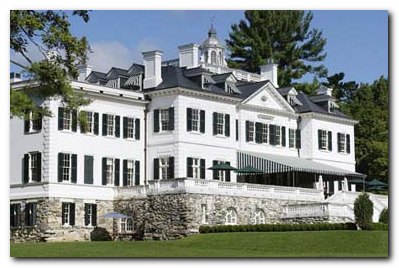
Edith Wharton’s 42-room house – The Mount
Further reading
Louis Auchincloss, Edith Wharton: A Woman of her Time, New York: Viking, 1971,
Elizabeth Ammons, Edith Wharton’s Argument with America, Georgia: University of Georgia Press, 1982, pp.222. ISBN: 0820305138
Janet Beer, Edith Wharton (Writers & Their Work), New York: Northcote House, 2001, pp.99, ISBN: 0746308981
Millicent Bell (ed), The Cambridge Companion to Edith Wharton, Cambridge: Cambridge University Press, 1995, pp.232, ISBN: 0521485134
Alfred Bendixen and Annette Zilversmit (eds), Edith Wharton: New Critical Essays, New York: Garland, 1992, pp.329, ISBN: 0824078489
Eleanor Dwight, Edith Wharton: An Extraordinary Life, New York: Harry N. Abrams, 1994, ISBN: 0810927950
Gloria C. Erlich, The Sexual Education of Edith Wharton, California: University of California Press, 1992, pp.223, ISBN: 0520075838
Susan Goodman, Edith Wharton’s Women: Friends and Rivals, UPNE, 1990, pp.220, ISBN: 0874515246
Irving Howe, (ed), Edith Wharton: A collection of Critical Essays, London: University of North Carolina Press, 1986,
Jennie A. Kassanoff, Edith Wharton and the Politics of Race, Cambridge: Cambridge University Press, 2004, pp.240, ISBN: 0521830893
Hermione Lee, Edith Wharton, London: Vintage, new edition 2008, pp.864, ISBN: 0099763516
R.W.B. Lewis, Edith Wharton: A Biography, New York: Harper and Rowe, 1975, pp.592, ISBN: 0880640200
James W. Tuttleton (ed), Edith Wharton: The Contemporary Reviews, Cambridge: Cambridge University Press, 1992, pp.586, ISBN: 0521383196
Candace Waid, Edith Wharton’s Letters from the Underworld, London: University of North Carolina Press, 1991,
Sarah Bird Wright, Edith Wharton A to Z: The Essential Reference to Her Life and Work, Fact on File, 1998, pp.352, ISBN: 0816034818
Cynthia Griffin Wolff, A Feast of Words: The Triumph of Edith Wharton, New York: Perseus Books, second edition 1994, pp.512, ISBN: 0201409186
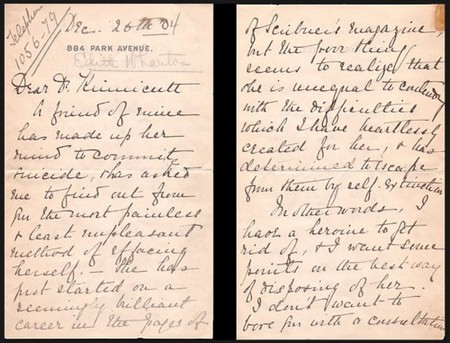
Edith Wharton’s writing
Other works by Edith Wharton
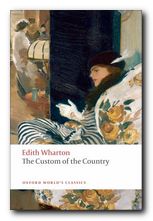 The Custom of the Country (1913) is Edith Wharton’s satiric anatomy of American society in the first decade of the twentieth century. It follows the career of Undine Spragg, recently arrived in New York from the midwest and determined to conquer high society. Glamorous, selfish, mercenary and manipulative, her principal assets are her striking beauty, her tenacity, and her father’s money. With her sights set on an advantageous marriage, Undine pursues her schemes in a world of shifting values, where triumph is swiftly followed by disillusion. This is a study of modern ambition and materialism written a hundred years before its time.
The Custom of the Country (1913) is Edith Wharton’s satiric anatomy of American society in the first decade of the twentieth century. It follows the career of Undine Spragg, recently arrived in New York from the midwest and determined to conquer high society. Glamorous, selfish, mercenary and manipulative, her principal assets are her striking beauty, her tenacity, and her father’s money. With her sights set on an advantageous marriage, Undine pursues her schemes in a world of shifting values, where triumph is swiftly followed by disillusion. This is a study of modern ambition and materialism written a hundred years before its time.
![]() Buy the book from Amazon UK
Buy the book from Amazon UK
![]() Buy the book from Amazon US
Buy the book from Amazon US
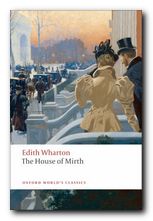 The House of Mirth (1905) is the story of Lily Bart, who is beautiful, poor, and still unmarried at twenty-nine. In her search for a husband with money and position she betrays her own heart and sows the seeds of the tragedy that finally overwhelms her. The book is a disturbing analysis of the stifling limitations imposed upon women of Wharton’s generation. In telling the story of Lily Bart, who must marry to survive, Wharton recasts the age-old themes of family, marriage, and money in ways that transform the traditional novel of manners into an arresting modern document of cultural anthropology.
The House of Mirth (1905) is the story of Lily Bart, who is beautiful, poor, and still unmarried at twenty-nine. In her search for a husband with money and position she betrays her own heart and sows the seeds of the tragedy that finally overwhelms her. The book is a disturbing analysis of the stifling limitations imposed upon women of Wharton’s generation. In telling the story of Lily Bart, who must marry to survive, Wharton recasts the age-old themes of family, marriage, and money in ways that transform the traditional novel of manners into an arresting modern document of cultural anthropology.
![]() Buy the book from Amazon UK
Buy the book from Amazon UK
![]() Buy the book from Amazon US
Buy the book from Amazon US
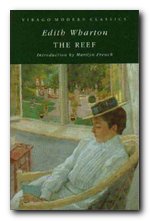 The Reef deals with three topics with which Edith Wharton herself was intimately acquainted at the period of its composition – unhappy marriage, divorce, and the discovery of sensual pleasures. The setting is a country chateau in France where diplomat George Darrow has arrived from America, hoping to marry the beautiful widow Anna Leith. But a young woman employed as governess to Anna’s daughter proves to be someone he met briefly in the past and has fallen in love with him. She also becomes engaged to Anna’s stepson. The result is a quadrangle of tensions and suspicions about who knows what about whom. And the outcome is not what you might imagine.
The Reef deals with three topics with which Edith Wharton herself was intimately acquainted at the period of its composition – unhappy marriage, divorce, and the discovery of sensual pleasures. The setting is a country chateau in France where diplomat George Darrow has arrived from America, hoping to marry the beautiful widow Anna Leith. But a young woman employed as governess to Anna’s daughter proves to be someone he met briefly in the past and has fallen in love with him. She also becomes engaged to Anna’s stepson. The result is a quadrangle of tensions and suspicions about who knows what about whom. And the outcome is not what you might imagine.
![]() Buy the book from Amazon UK
Buy the book from Amazon UK
![]() Buy the book from Amazon US
Buy the book from Amazon US
Edith Wharton – web links
Edith Wharton at Mantex
Biographical notes, study guides to the major novels, tutorials on the shorter fiction, bibliographies, critiques of the shorter fiction, and web links.
The Short Stories of Edith Wharton
This is an old-fashioned but excellently detailed site listing the publication details of all Edith Wharton’s eighty-six short stories – with links to digital versions available free on line.
Edith Wharton at Gutenberg
Free eTexts of the major novels and collections of stories in a variety of digital formats – also includes travel writing and interior design.
Edith Wharton at Wikipedia
Full details of novels, stories, and travel writing, adaptations for television and the cinema, plus web links to related sites.
The Edith Wharton Society
Old but comprehensive collection of free eTexts of the major novels, stories, and travel writing, linking archives at University of Virginia and Washington State University.
The Mount: Edith Wharton’s Home
Aggressively commercial site devoted to exploiting The Mount – the house and estate designed by Edith Wharton. Plan your wedding reception here.
Edith Wharton at Fantastic Fiction
A compilation which purports to be a complete bibliography, arranged as novels, collections, non-fiction, anthologies, short stories, letters, and commentaries – but is largely links to book-selling sites, which however contain some hidden gems.
Wharton’s manuscripts
Archive of Wharton holdings at the Beinecke Rare Book and Manuscript Library
© Roy Johnson 2014
Edith Wharton – short stories
More on Edith Wharton
More on short stories
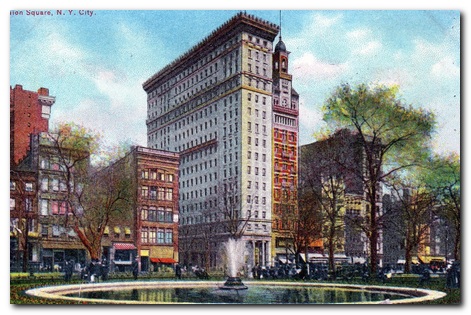
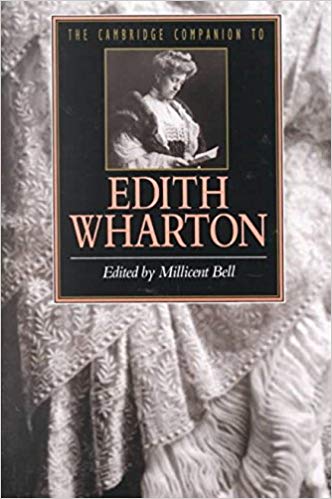
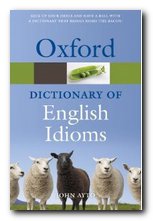
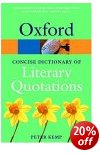
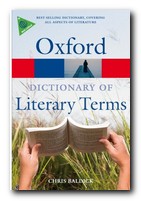
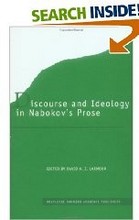
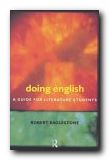
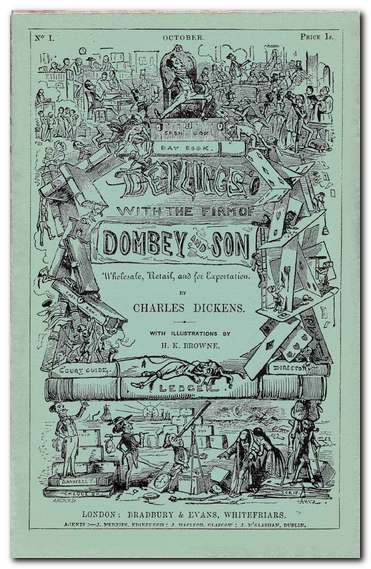
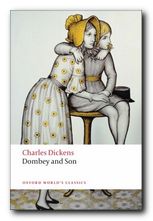 Yet when his wife bears him a male child (Paul junior) the son is immediately removed from his primary sources of emotional comfort – first of all from his mother because she dies, then from his beloved nurse, Polly Toodles, because Dombey fires her. Dombey then submits his son to the dubious care of his stupid sister Mrs Chick and her friend Miss Tox. Even worse, he subsequently sends Paul to the appalling establishment run by the fraudulent Mrs Pipchin in Brighton. She neglects the children placed in her care to an almost criminal extent.
Yet when his wife bears him a male child (Paul junior) the son is immediately removed from his primary sources of emotional comfort – first of all from his mother because she dies, then from his beloved nurse, Polly Toodles, because Dombey fires her. Dombey then submits his son to the dubious care of his stupid sister Mrs Chick and her friend Miss Tox. Even worse, he subsequently sends Paul to the appalling establishment run by the fraudulent Mrs Pipchin in Brighton. She neglects the children placed in her care to an almost criminal extent.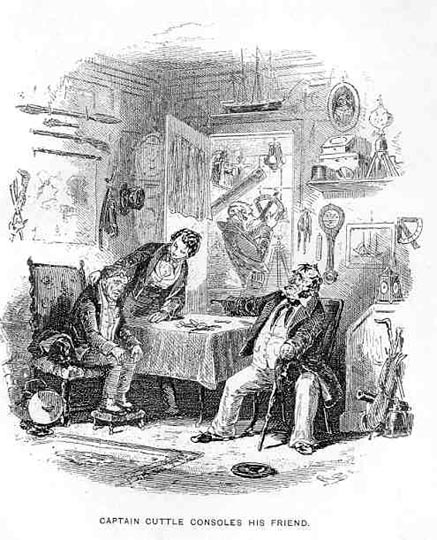
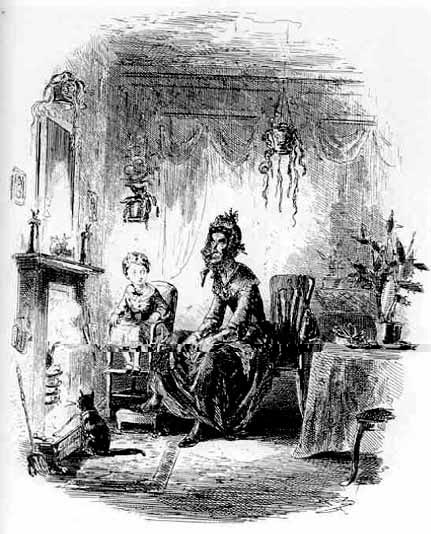
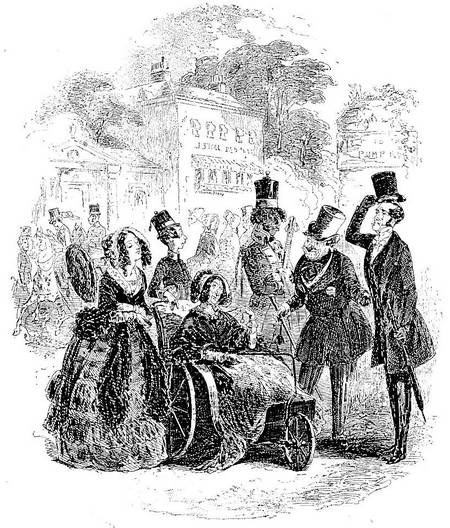
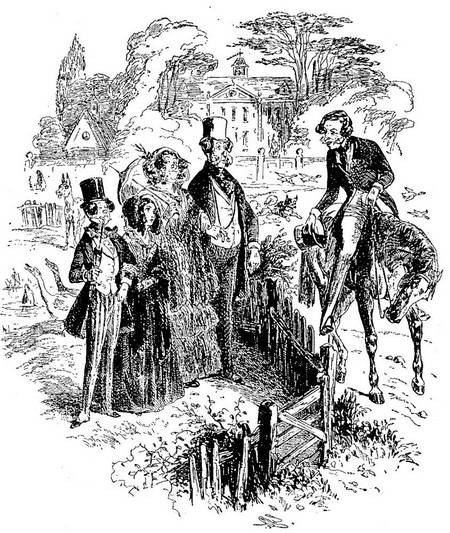
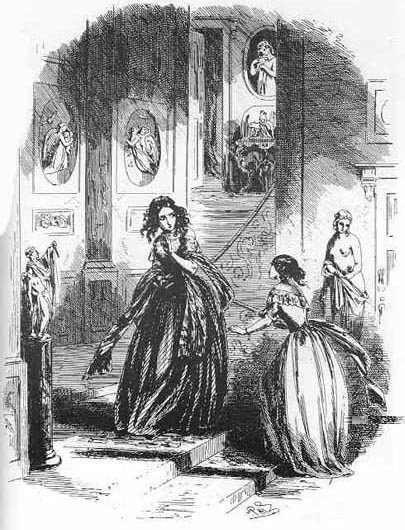
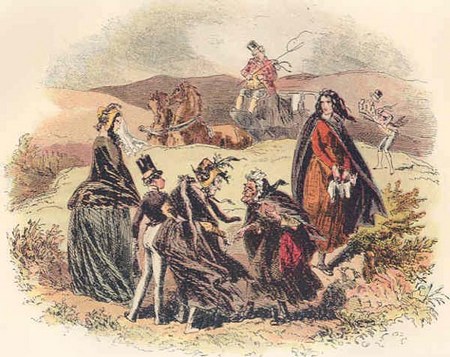
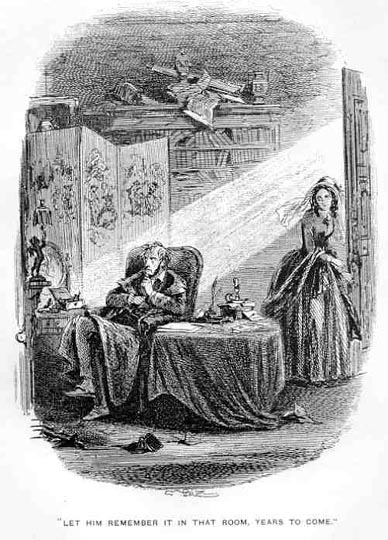

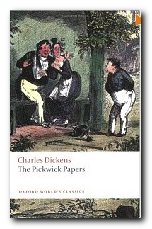 Pickwick Papers (1836-37) was Dickens’ first big success. It was issued in twenty monthly parts and is not so much a novel as a series of loosely linked sketches and changing characters featured in reports to the Pickwick Club. These recount comic excursions to Rochester, Dingley Dell, and Bath; duels and elopements; Christmas festivities; Mr Pickwick inadvertently entering the bedroom of a middle-aged lady at night; and in the end a happy marriage. Much light-hearted fun, and a host of memorable characters.
Pickwick Papers (1836-37) was Dickens’ first big success. It was issued in twenty monthly parts and is not so much a novel as a series of loosely linked sketches and changing characters featured in reports to the Pickwick Club. These recount comic excursions to Rochester, Dingley Dell, and Bath; duels and elopements; Christmas festivities; Mr Pickwick inadvertently entering the bedroom of a middle-aged lady at night; and in the end a happy marriage. Much light-hearted fun, and a host of memorable characters.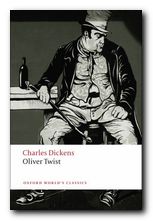 Oliver Twist (1837-38) expresses Dickens’ sense of the vulnerability of children. Oliver is a foundling, raised in a workhouse, who escapes suffering by running off to London. There he falls into the hands of a gang of thieves controlled by the infamous Fagin. He is pursued by the sinister figure of Monks who has secret information about him. The plot centres on the twin issues of personal identity and a secret inheritance (which surface again in Great Expectations). Emigration, prison, and violent death punctuate a cascade of dramatic events. This is the early Victorian novel in fine melodramatic form. Recommended for beginners to Dickens.
Oliver Twist (1837-38) expresses Dickens’ sense of the vulnerability of children. Oliver is a foundling, raised in a workhouse, who escapes suffering by running off to London. There he falls into the hands of a gang of thieves controlled by the infamous Fagin. He is pursued by the sinister figure of Monks who has secret information about him. The plot centres on the twin issues of personal identity and a secret inheritance (which surface again in Great Expectations). Emigration, prison, and violent death punctuate a cascade of dramatic events. This is the early Victorian novel in fine melodramatic form. Recommended for beginners to Dickens.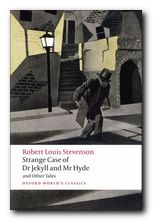
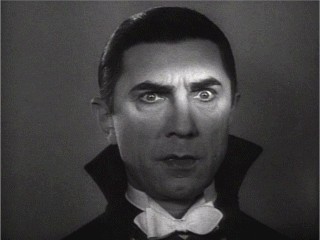
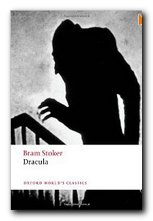 English solicitor Jonathan Harker travels to Transylvania to visit Count Dracula, who has bought properties in London. He is hospitably received, but then is held prisoner in the castle, where he encounters three female vampires. Harker writes letters to his fiancée and employer asking for help, but Dracula intercepts them. Dracula then takes a boat journey to England. On the journey the entire crew disappear one by one. The ship is driven ashore at Whitby, Yorkshire during a violent storm.
English solicitor Jonathan Harker travels to Transylvania to visit Count Dracula, who has bought properties in London. He is hospitably received, but then is held prisoner in the castle, where he encounters three female vampires. Harker writes letters to his fiancée and employer asking for help, but Dracula intercepts them. Dracula then takes a boat journey to England. On the journey the entire crew disappear one by one. The ship is driven ashore at Whitby, Yorkshire during a violent storm.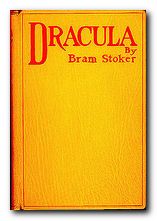 Van Helsing reads Lucy’s diaries and letters, then visits Mina and Jonathan in Exeter and reads the typed copies of their journals, which Mina has made. He then recruits John Seward to visit Lucy’s tomb, which turns out to be empty when they visit it at night. On returning in the daylight however, they find her there. He then recruits Arthur Holmwood and Quincy Morris, and the four men confront Lucy in her vampire mode outside the tomb. Next day they return in the daylight and Arthur drives a stake through her heart, following which Van Helsing cuts off her head.
Van Helsing reads Lucy’s diaries and letters, then visits Mina and Jonathan in Exeter and reads the typed copies of their journals, which Mina has made. He then recruits John Seward to visit Lucy’s tomb, which turns out to be empty when they visit it at night. On returning in the daylight however, they find her there. He then recruits Arthur Holmwood and Quincy Morris, and the four men confront Lucy in her vampire mode outside the tomb. Next day they return in the daylight and Arthur drives a stake through her heart, following which Van Helsing cuts off her head.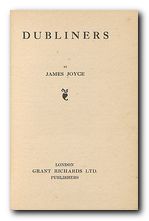 This collection of vignettes features both real and imaginary figures in Dublin life around the turn of the century, ending with the most famous of all Joyce’s stories – ‘The Dead’. The book caused controversy when it first appeared, and was banned in Ireland almost immediately upon publication, the first of many of Joyce’s works to be censored or banned in his native country. Dubliners is now widely regarded as a seminal collection of modern short stories.
This collection of vignettes features both real and imaginary figures in Dublin life around the turn of the century, ending with the most famous of all Joyce’s stories – ‘The Dead’. The book caused controversy when it first appeared, and was banned in Ireland almost immediately upon publication, the first of many of Joyce’s works to be censored or banned in his native country. Dubliners is now widely regarded as a seminal collection of modern short stories.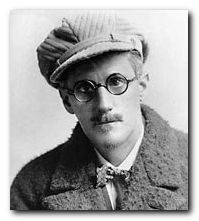
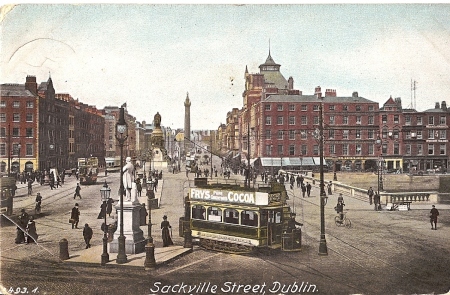
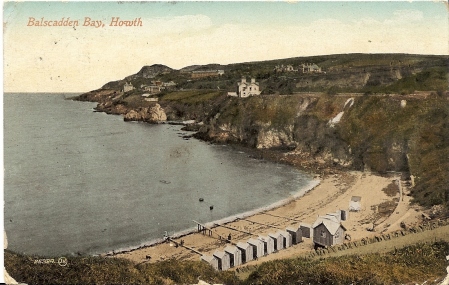
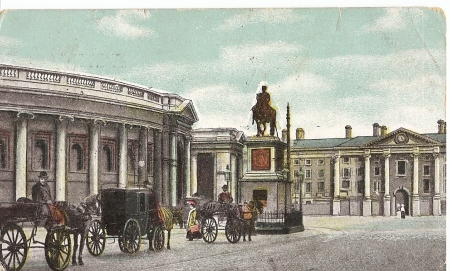
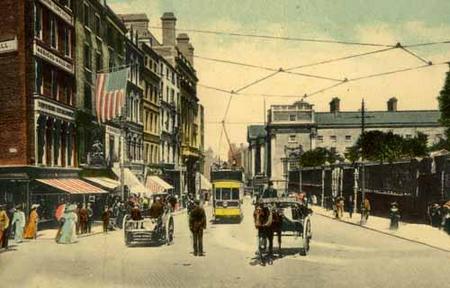
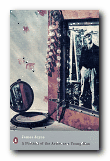 A Portrait of the Artist as a Young Man is Joyce’s first complete novel – a largely autobiographical account of a young man’s struggle with Catholicism and his desire to forge himself as an artist. It features a prose style whose complexity develops in parallel with the growth of the hero, Stephen Dedalus. The early pages are written from a child’s point of view, but then they quickly become more sophisticated. As Stephen struggles with religious belief and the growth of his sexual feelings as a young adult, the prose become more complex and philosophical. In addition to the account of his personal life and a critique of Irish society at the beginning of the last century, it also incorporates the creation of an aesthetic philosophy which was unmistakably that of Joyce himself. The novel ends with Stephen quitting Ireland for good, just as Joyce himself was to do – never to return.
A Portrait of the Artist as a Young Man is Joyce’s first complete novel – a largely autobiographical account of a young man’s struggle with Catholicism and his desire to forge himself as an artist. It features a prose style whose complexity develops in parallel with the growth of the hero, Stephen Dedalus. The early pages are written from a child’s point of view, but then they quickly become more sophisticated. As Stephen struggles with religious belief and the growth of his sexual feelings as a young adult, the prose become more complex and philosophical. In addition to the account of his personal life and a critique of Irish society at the beginning of the last century, it also incorporates the creation of an aesthetic philosophy which was unmistakably that of Joyce himself. The novel ends with Stephen quitting Ireland for good, just as Joyce himself was to do – never to return.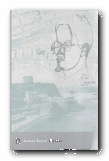 Ulysses (1922) is one of the greatest novels of the twentieth century, and it is certainly Joyce’s most celebrated work. He takes Homer’s Odyssey as a structural framework and uses it as the base to create a complex story of characters moving around Dublin on a single day in June 1904. Each separate chapter is written in a different prose style to reflect its theme or subject. The novel also includes two forms of the ‘stream of consciousness’ technique. This was Joyce’s attempt to reproduce the apparently random way in which our perceptions of the world are mixed with our conscious ideas and memories in an unstoppable flow of thought. There is a famous last chapter which is an eighty page unpunctuated soliloquy of a woman as she lies in bed at night, mulling over the events of her life and episodes from the previous day.
Ulysses (1922) is one of the greatest novels of the twentieth century, and it is certainly Joyce’s most celebrated work. He takes Homer’s Odyssey as a structural framework and uses it as the base to create a complex story of characters moving around Dublin on a single day in June 1904. Each separate chapter is written in a different prose style to reflect its theme or subject. The novel also includes two forms of the ‘stream of consciousness’ technique. This was Joyce’s attempt to reproduce the apparently random way in which our perceptions of the world are mixed with our conscious ideas and memories in an unstoppable flow of thought. There is a famous last chapter which is an eighty page unpunctuated soliloquy of a woman as she lies in bed at night, mulling over the events of her life and episodes from the previous day.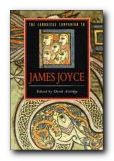 The Cambridge Companion to James Joyce contains eleven essays by an international team of leading Joyce scholars. The topics covered include his debt to Irish and European writers and traditions, his life in Paris, and the relation of his work to the ‘modern’ spirit of sceptical relativism. One essay describes Joyce’s developing achievement in his earlier works (Stephen Hero, Dubliners, and A Portrait of the Artist as a Young Man). Another tackles his best-known text, asking the basic question ‘What is Ulysses about, and how can it be read?’ The issue of ‘difficulty’ raised by Finnegans Wake is directly addressed, and the reader is taken through questions of theme, language, structure and meaning, as well as the book’s composition and the history of Wake criticism.
The Cambridge Companion to James Joyce contains eleven essays by an international team of leading Joyce scholars. The topics covered include his debt to Irish and European writers and traditions, his life in Paris, and the relation of his work to the ‘modern’ spirit of sceptical relativism. One essay describes Joyce’s developing achievement in his earlier works (Stephen Hero, Dubliners, and A Portrait of the Artist as a Young Man). Another tackles his best-known text, asking the basic question ‘What is Ulysses about, and how can it be read?’ The issue of ‘difficulty’ raised by Finnegans Wake is directly addressed, and the reader is taken through questions of theme, language, structure and meaning, as well as the book’s composition and the history of Wake criticism.